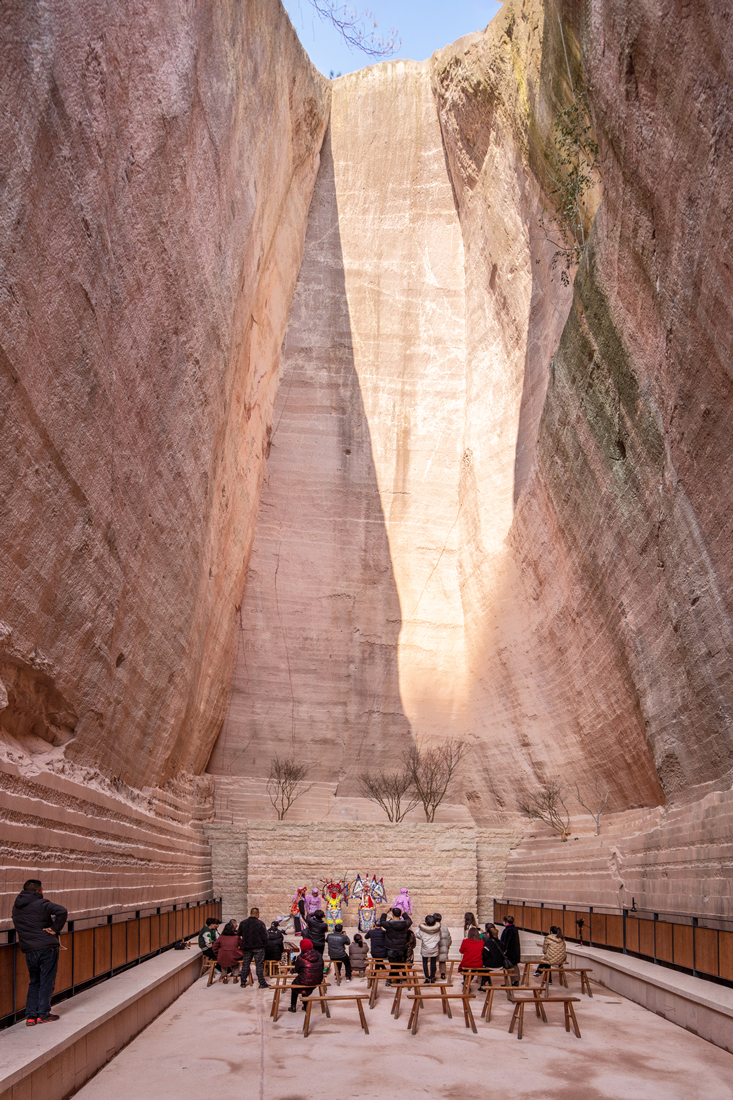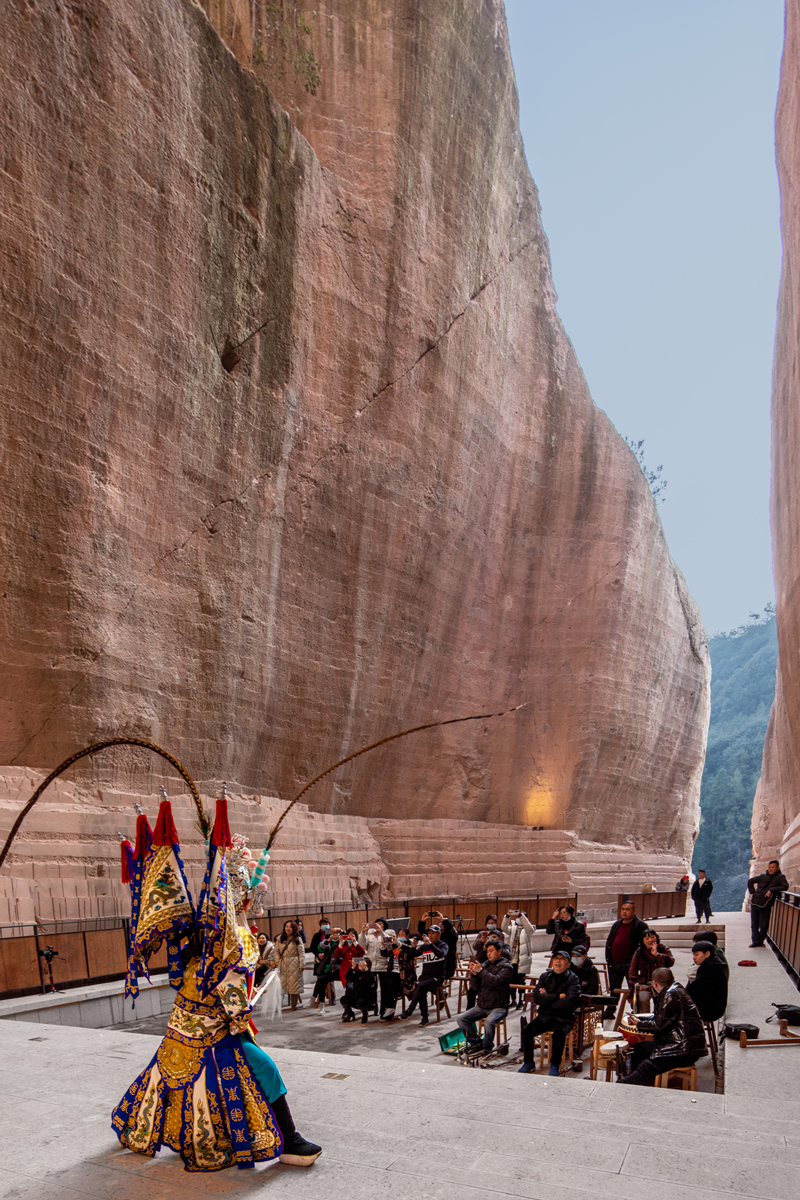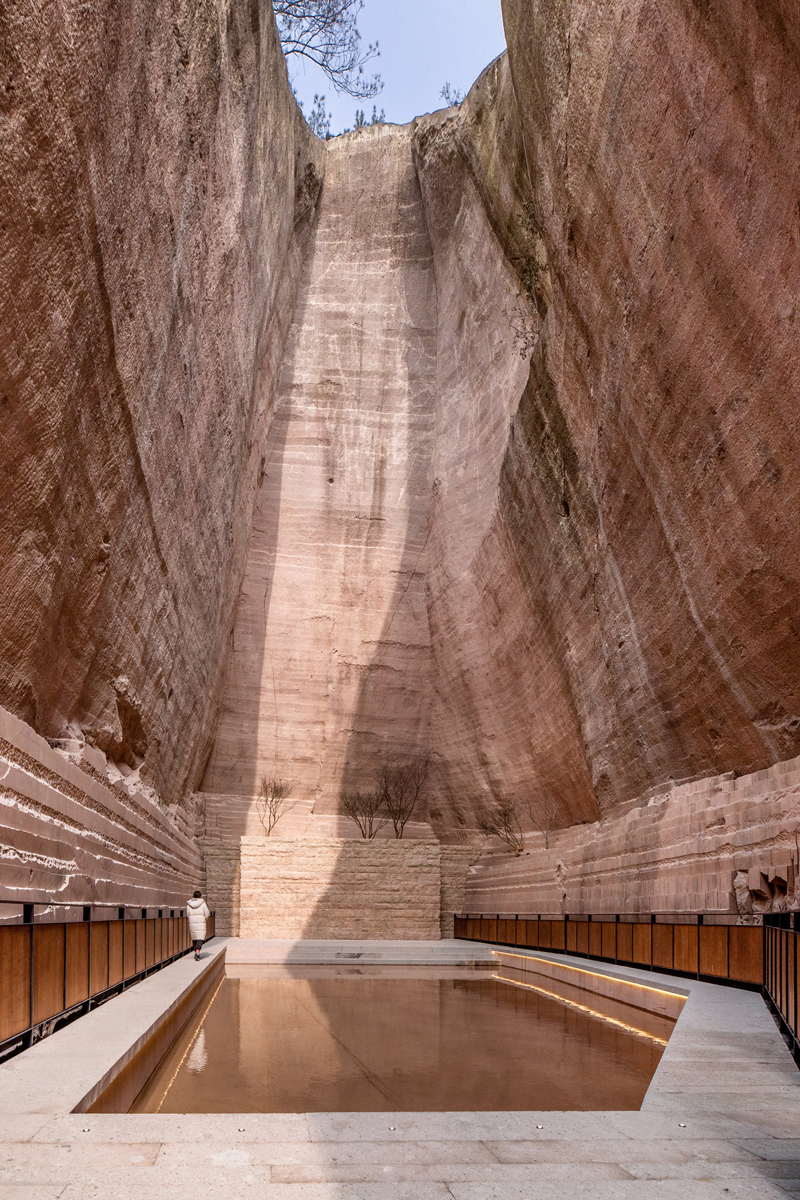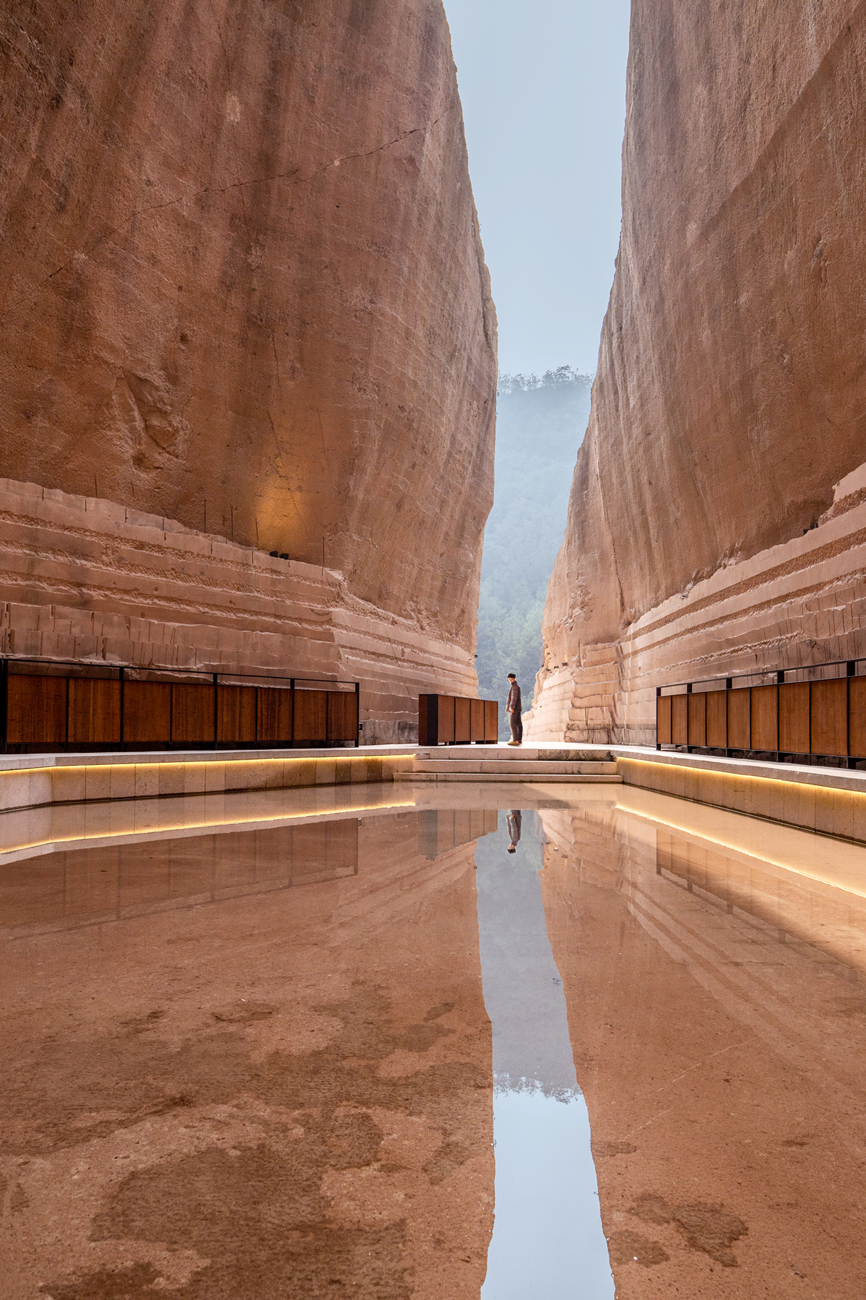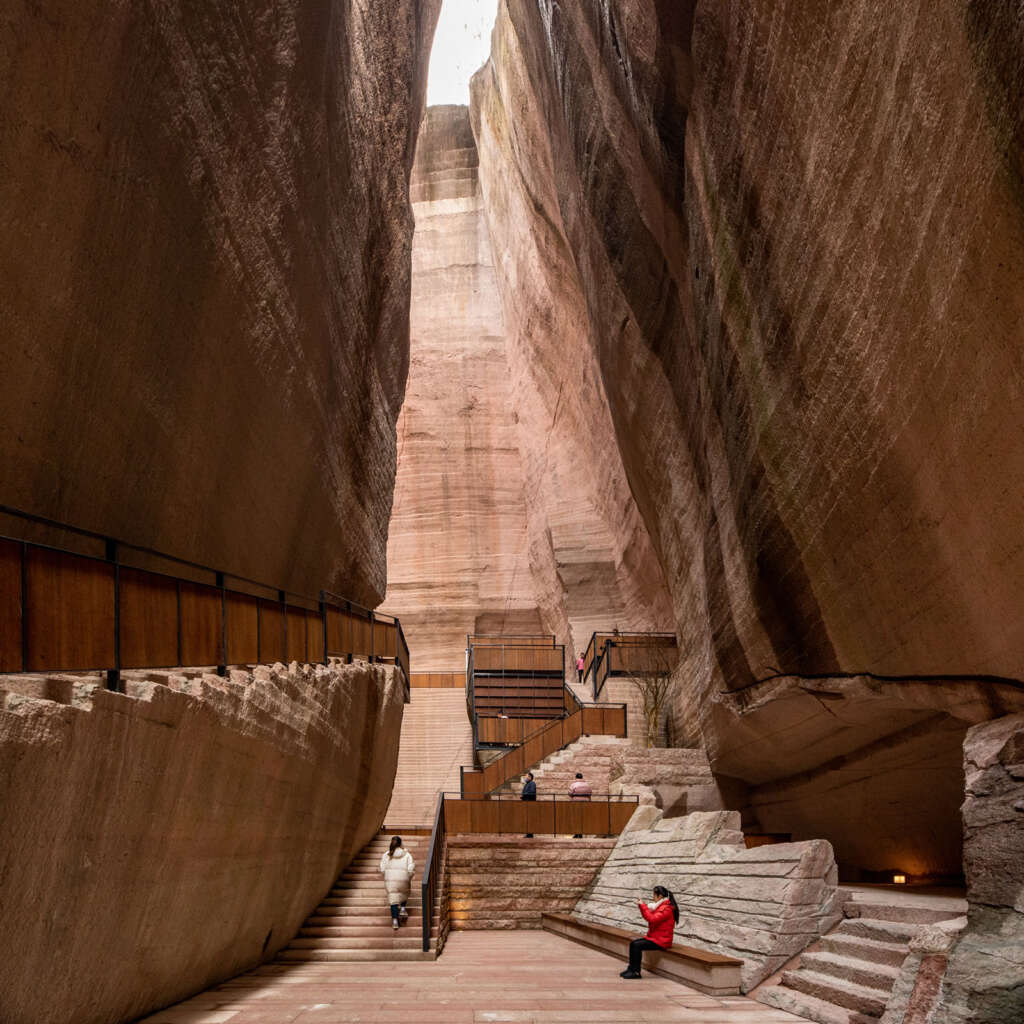
Jjinyun Quarries
Architect: DnA_Design and Architecture
Location: Jinyun County, Zhejiang Province, China
Type: Cultural
Year: 2022
Images: Wang Ziling Ⓒ DnA_Design and Architecture
Unconventional Spatial Resources in Jinyun County
The following description is courtesy of Eduard Koegel and was first published in World Architects. Jinyun County in the southwest of Zhejiang Province is located only a few kilometres to the east of Songyang County, both of which are administered by the prefectural city of Lishui. In the northern part of Jinyun, the landscape is characterized by the meandering loops of the Hao River and by weathered, picturesque, ancient volcanic landscapes. The Xiandu Scenic Area is one of 280 tourist destinations rated 5A by the national administration and already attracts many tourists. Famous scholars have extolled the stunning scenery for its unique beauty since the Song Dynasty (960–1279). Today, Jinyun County has a population of over 467,000 in its eighteen towns.
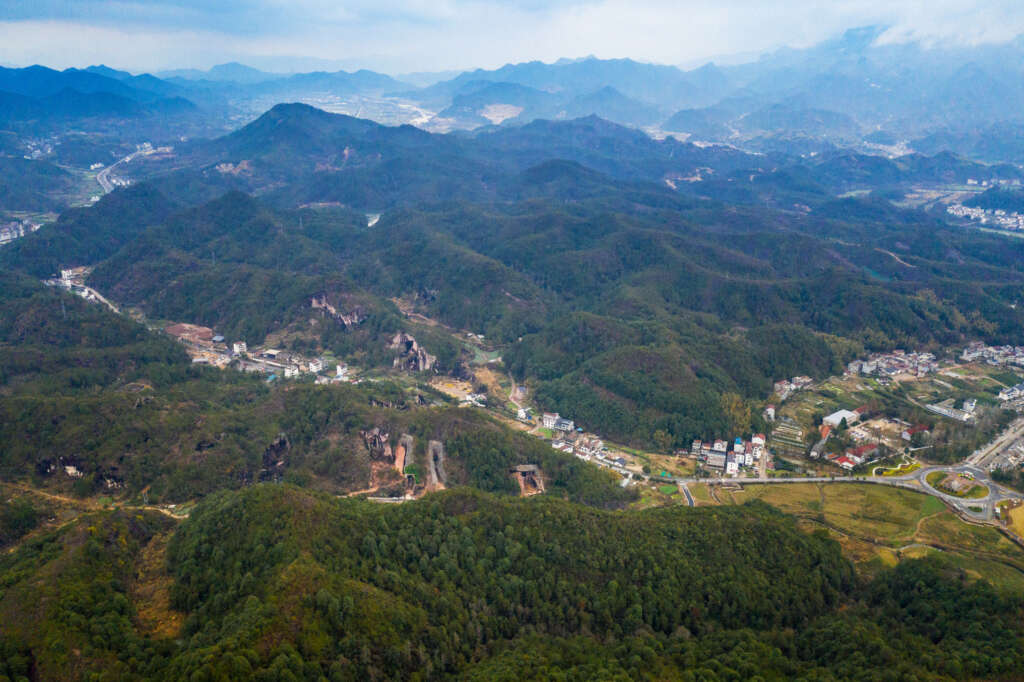
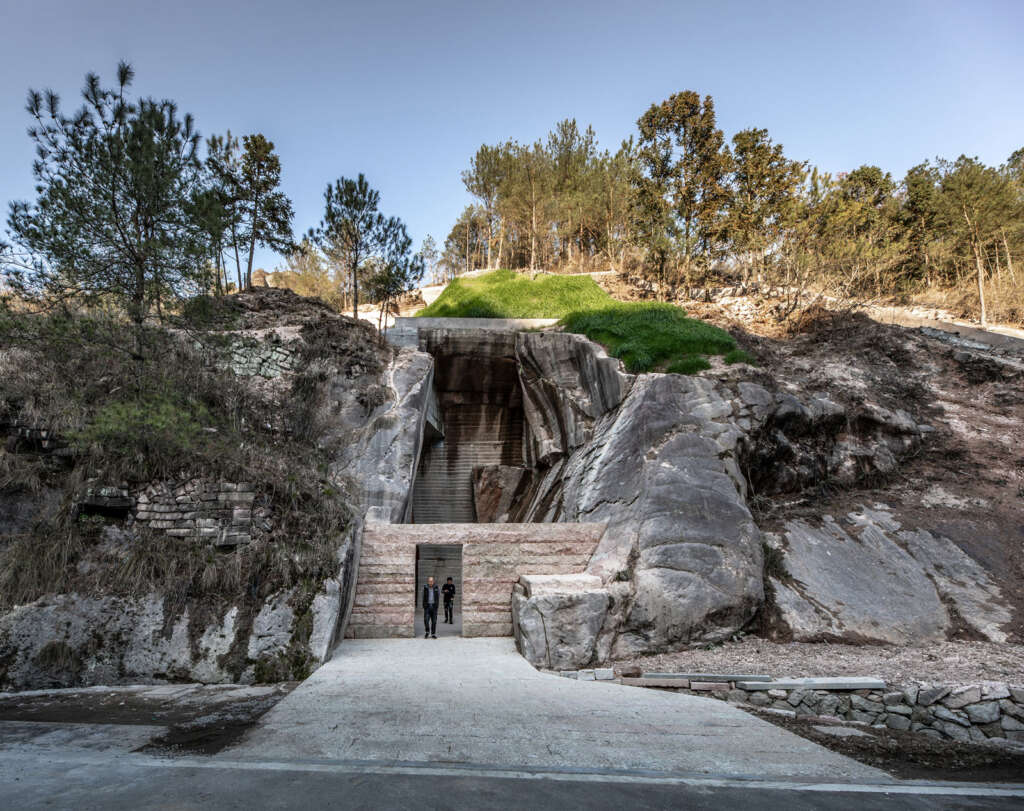
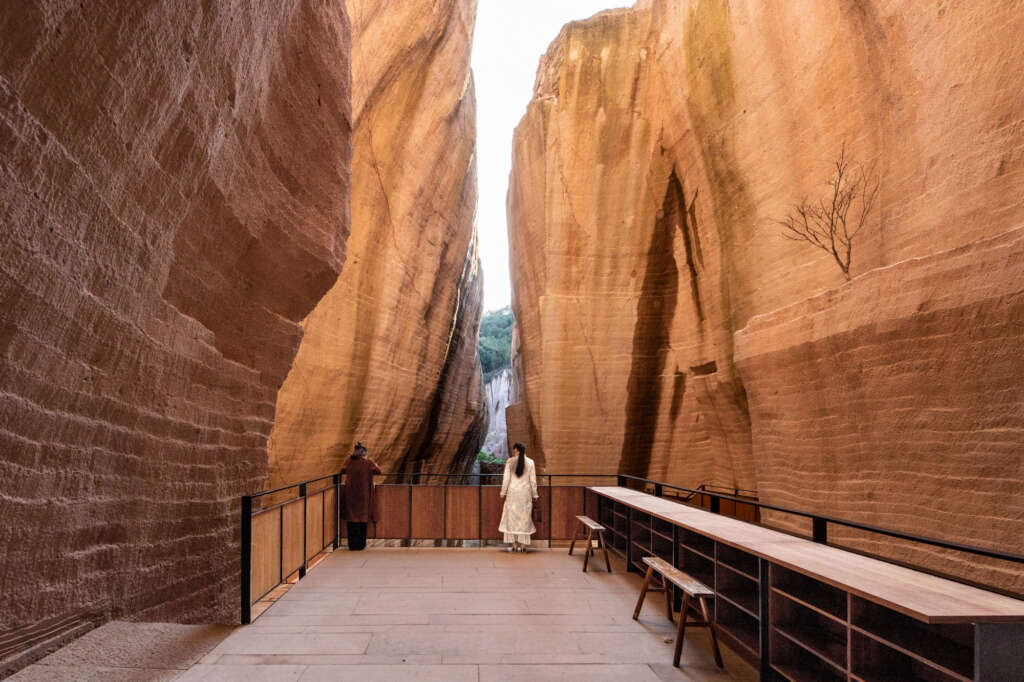
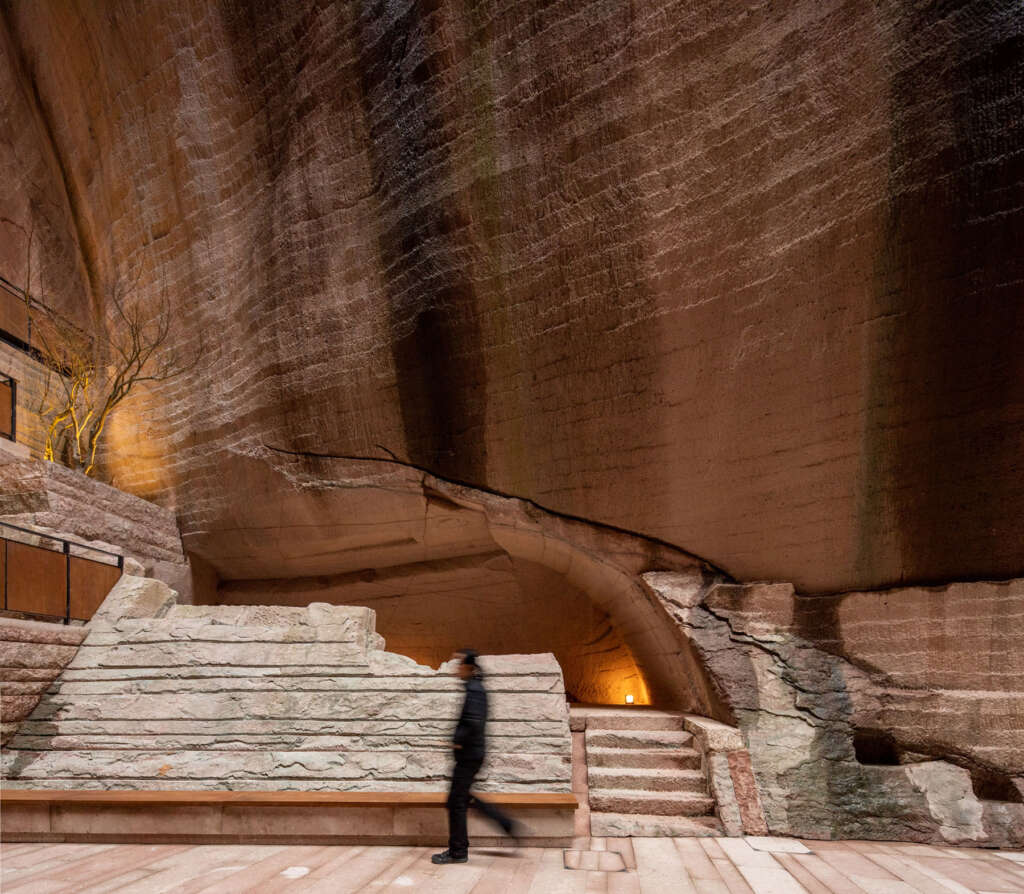
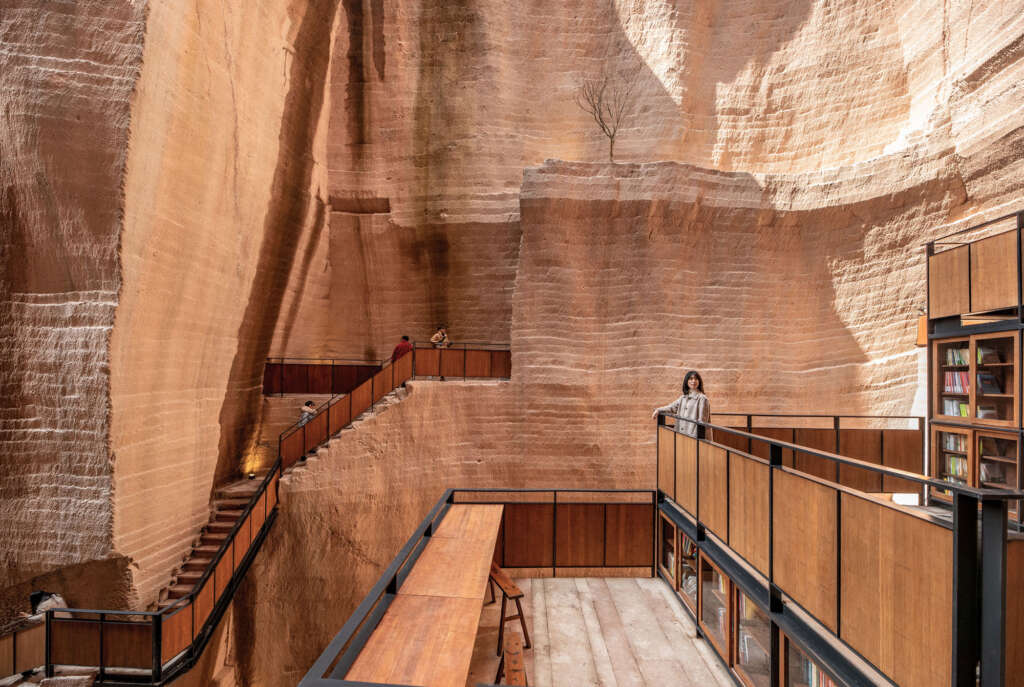
Jinyun County was already mentioned in the Spring and Autumn Annals (722–481 BC) and the Warring States Period (475–221 BC) as the site of one of the three great palaces of the legendary Yellow Emperor (Huangdi), who has been revered as the founder of the Chinese nation for over 5000 years. On the riverbank stands the world’s tallest monolithic stone pillar, Dinghu Peak, at over 170 metres, from where, according to legend, the Yellow Emperor flew to heaven on a dragon. The temple dedicated to him was, however, destroyed during the Ming Dynasty (1368–1644) and was not rebuilt until 1994. Since then, it has regularly been used for commemorative ceremonies, and has been listed as National Intangible Cultural Heritage since 2011. The calligraphic rock inscriptions found in the Xiandu Scenic Area are another cultural attraction in the region. There are 125 rock inscriptions, two of which date from the Tang Dynasty (617/18–907), fifty-five from the Song Dynasty (960–1279), twenty-eight from the Ming Dynasty (1368–1644), eight from the Qing Dynasty (1644–1911), sixteen from the Republican Period (1912–1949), and ten from modern times. The rock inscriptions have been protected as cultural monuments since 2001 and are of great historical and artistic significance, since they span a long period of time and display a wide range of calligraphic styles.
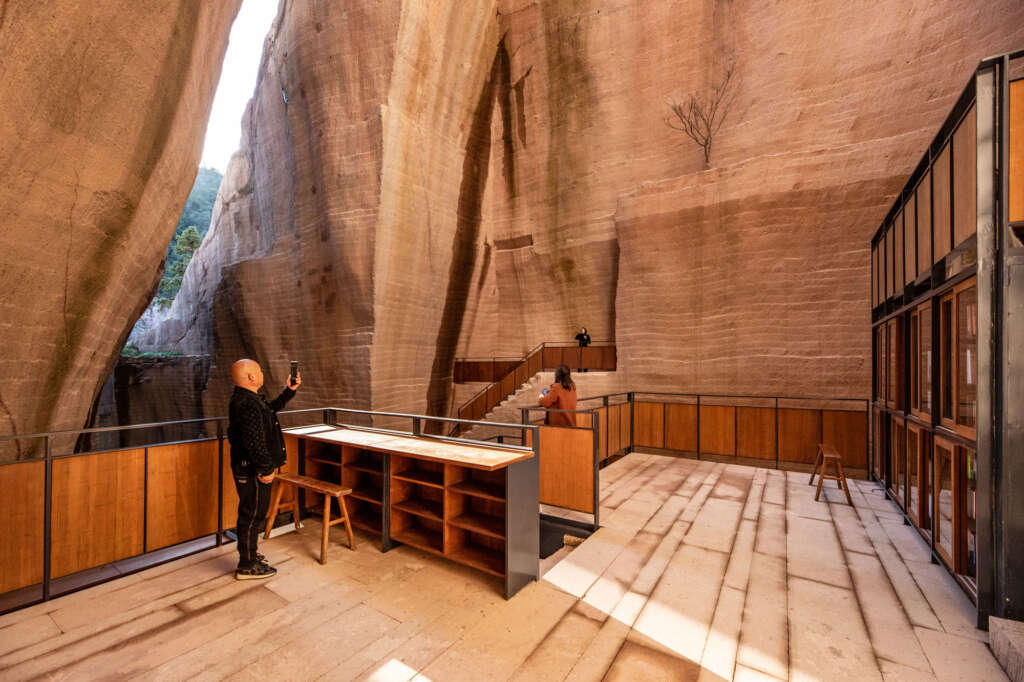
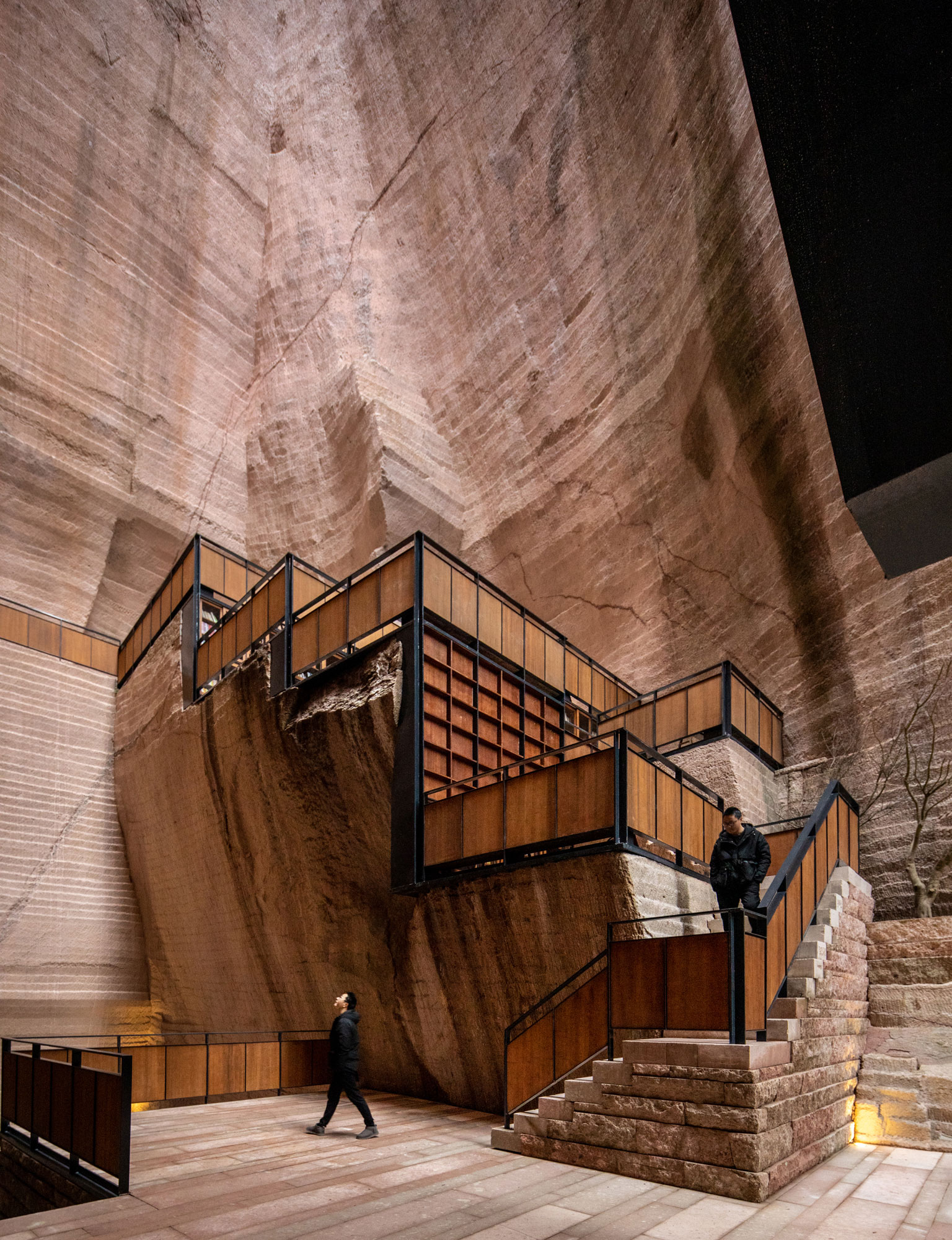
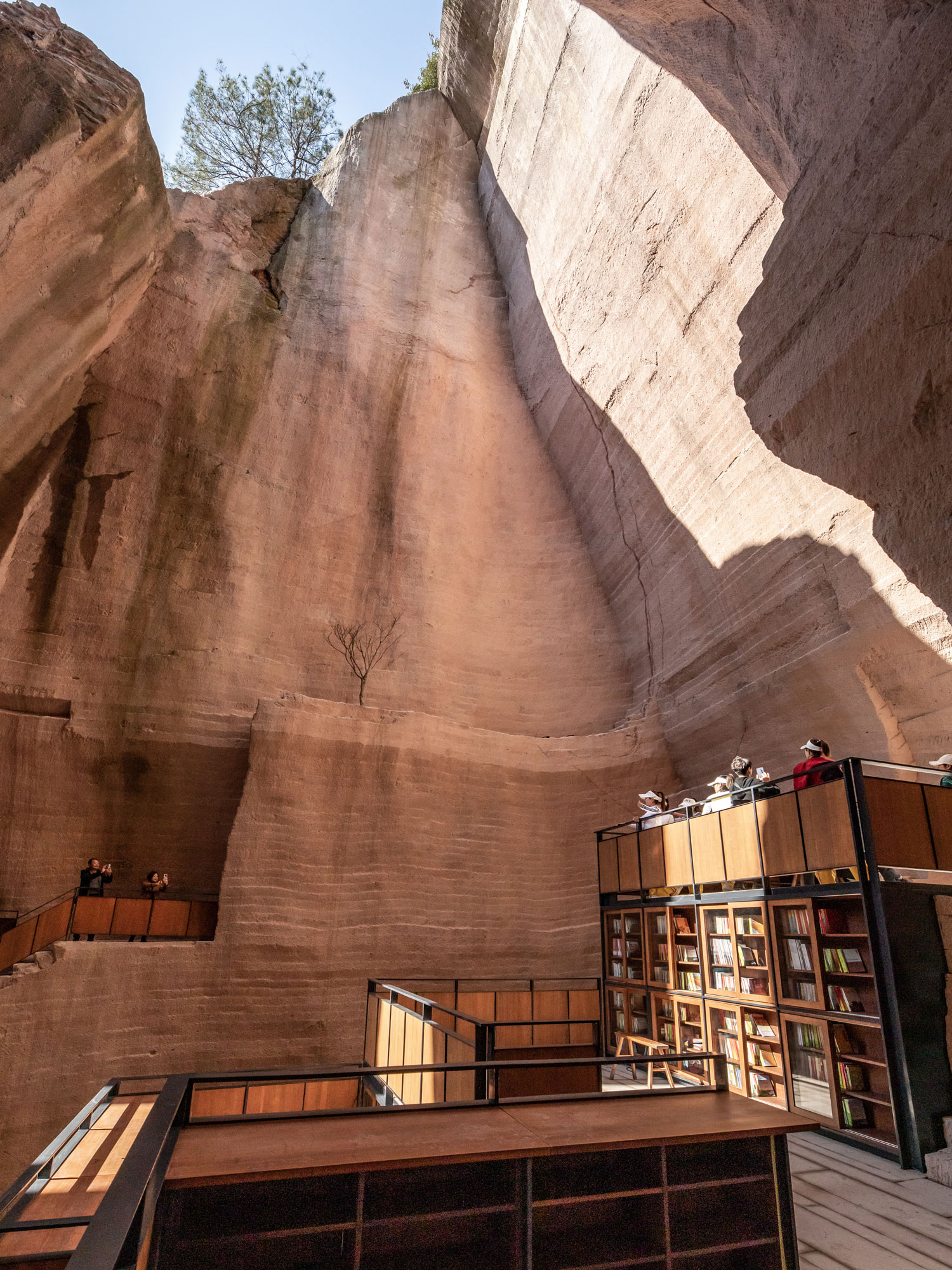
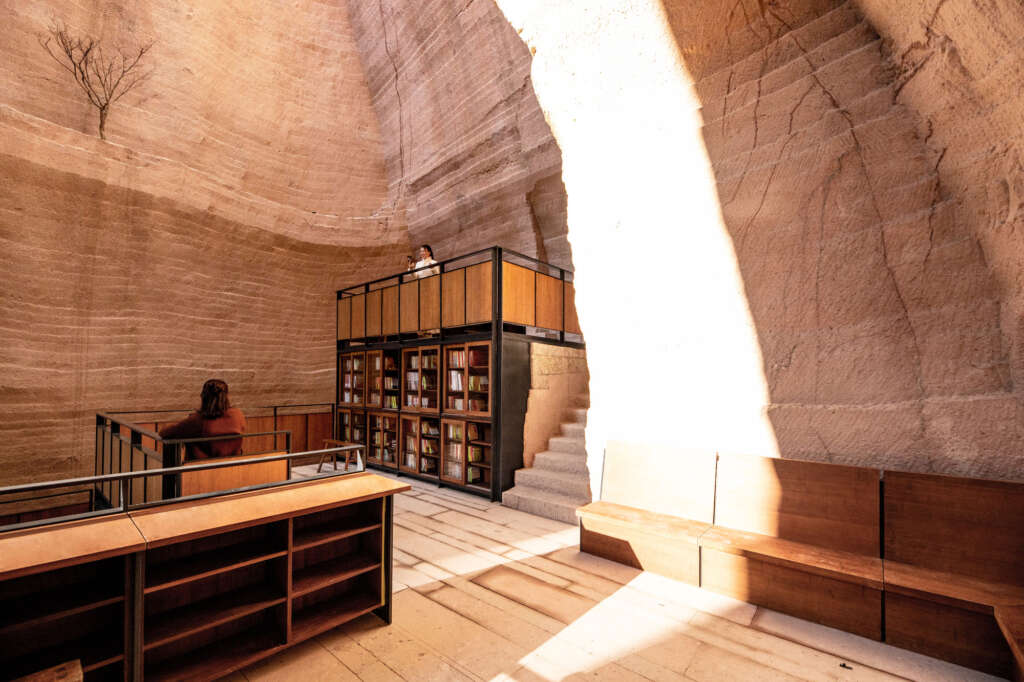
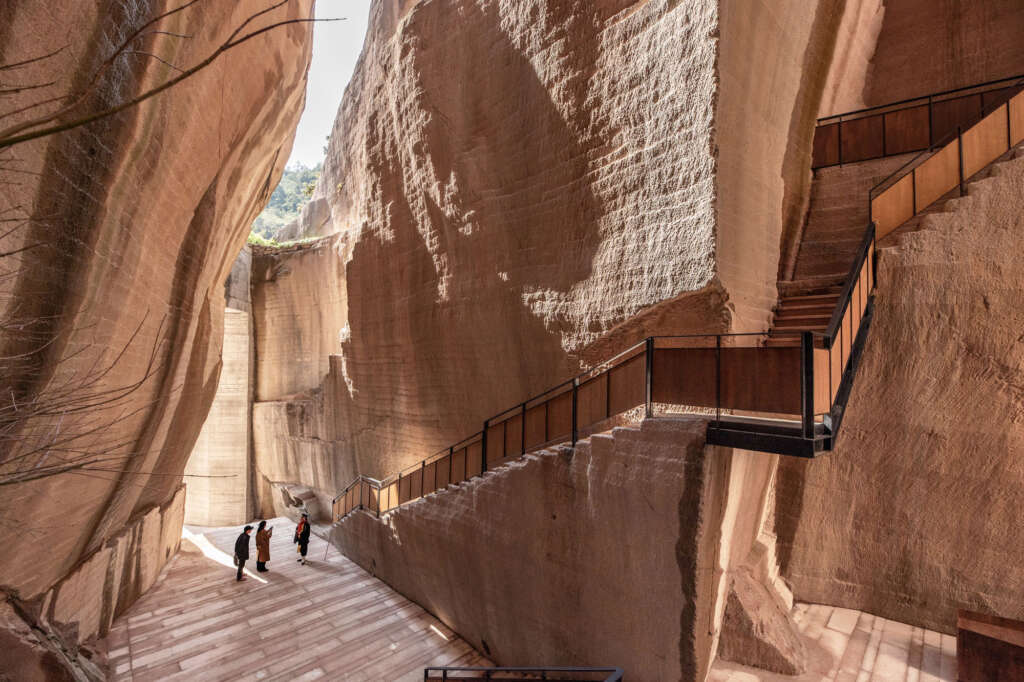
Jinyun County, almost 80 per cent of whose landscape is forested, borders seven other counties. It has a warm and humid subtropical monsoon climate with four distinct seasons. The Xiandu Scenic Area encompasses an impressive natural landscape that has always been a significant source of inspiration for scholars and Taoists, and has served as a setting for over 200 films that have been shot in recent years. Because of its great cultural significance, many poetic attributes have been assigned to the area. Hence, in Chinese, the area is called Xiandu, which translates as ‘fairyland’. Today, the region is also known for ecological tourism, which will be expanded further in the future.
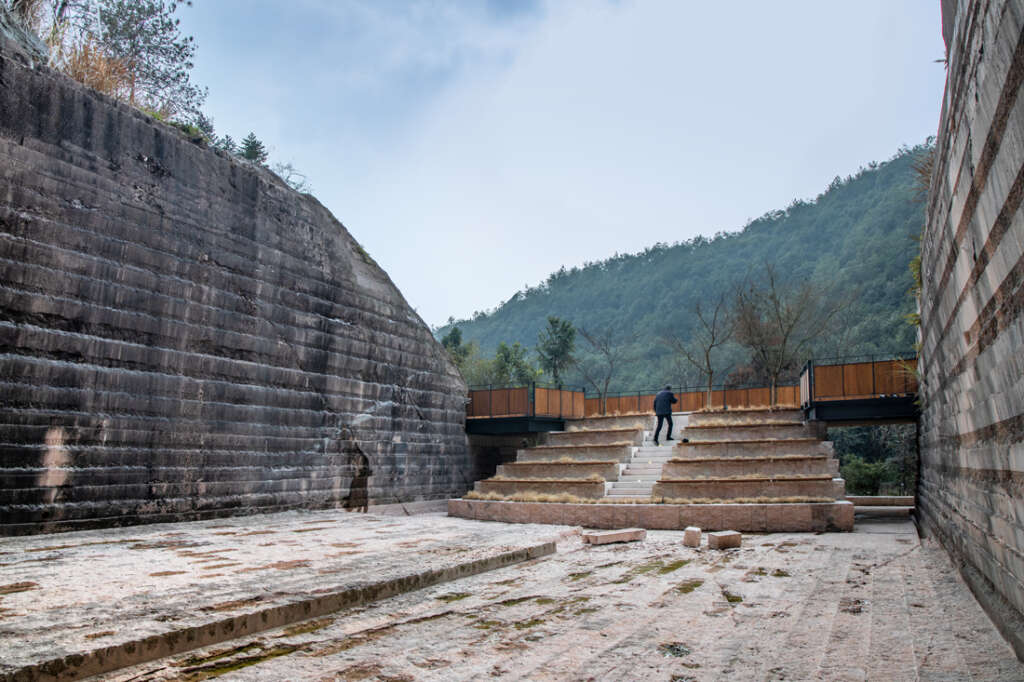
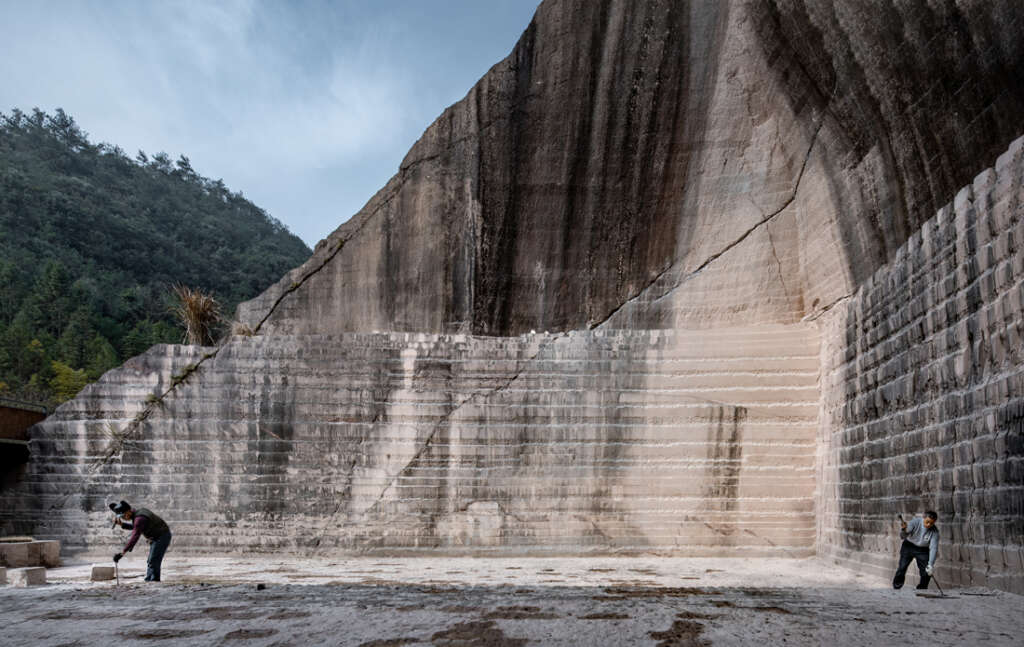
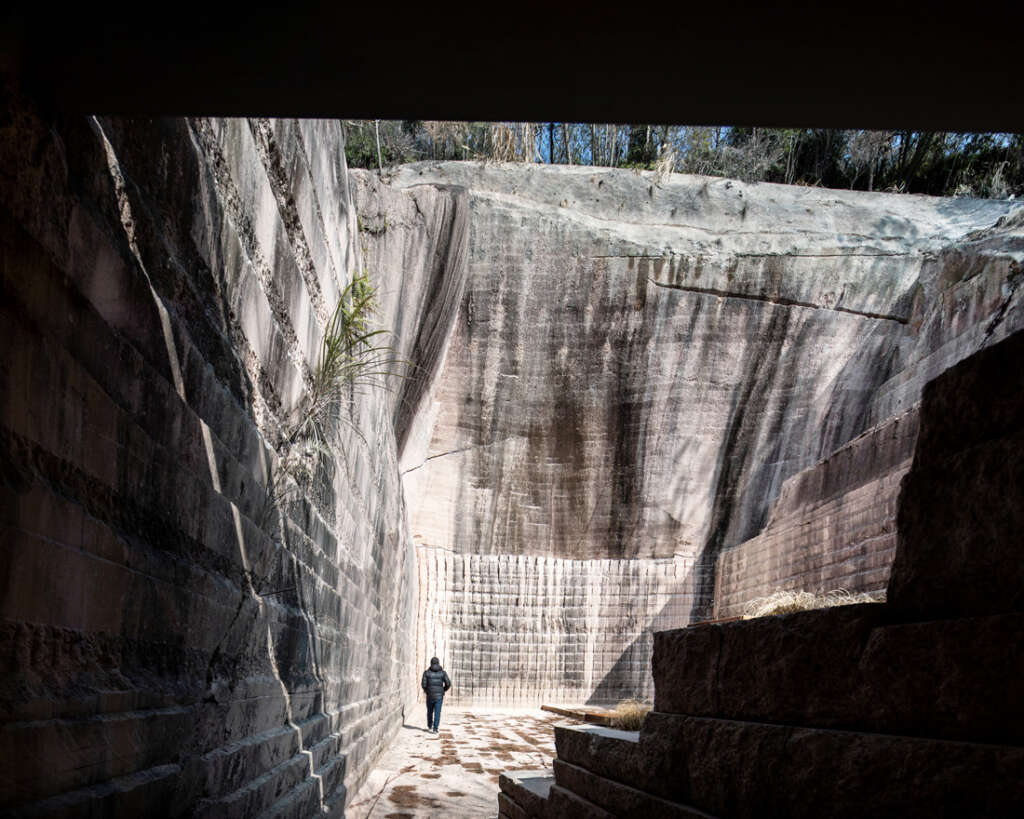
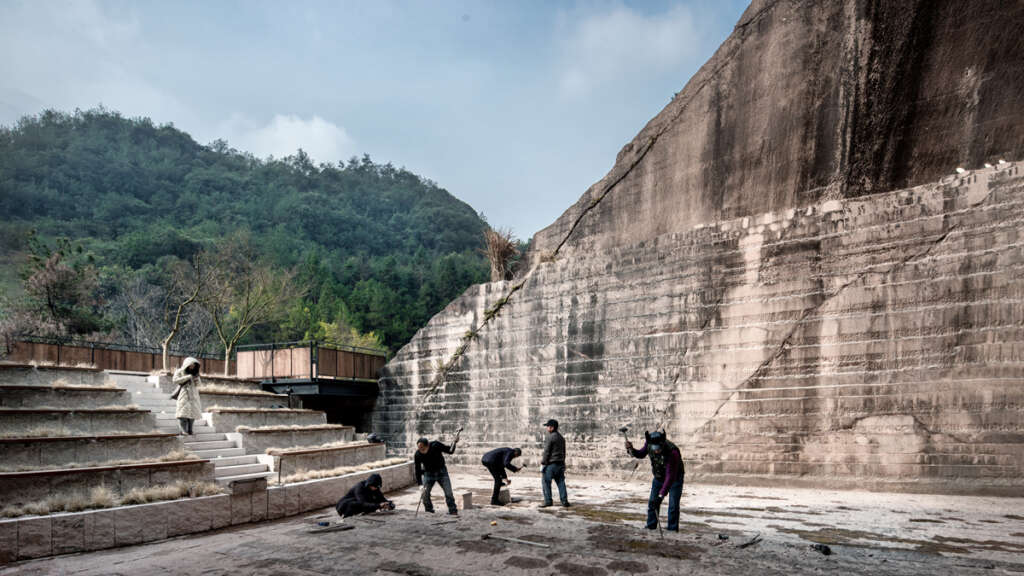
The Quarries of Jinyun
In the region, there are more than 3000 small abandoned quarries, which until recently—with few exceptions—were exploited by hand without the assistance of machines. The nine quarries that Xu Tiantian and her team are working on are located in a valley that is part of the Xiandu Scenic Area. In order to support regional development, the project aims at ecological improvements. At the same time, the measures being realized create social and cultural locations that serve both the local population and visitors. The converted and repurposed quarries will become part of a public infrastructure that puts historical aspects and everyday cultural heritage dating back over a thousand years in a new context.
The quarries are located north of Dinghu village along a route of about one kilometre in a valley that divides two mountain ranges diagonally from the southwest to the northeast. A country road lined with small hamlets runs through the valley. Six of the quarries are located in the western mountain range and three of them in the eastern range, and are interlinked conceptually by a path that forms a space of experience. An information centre will be built directly on the road in the valley in a future stage of the project.
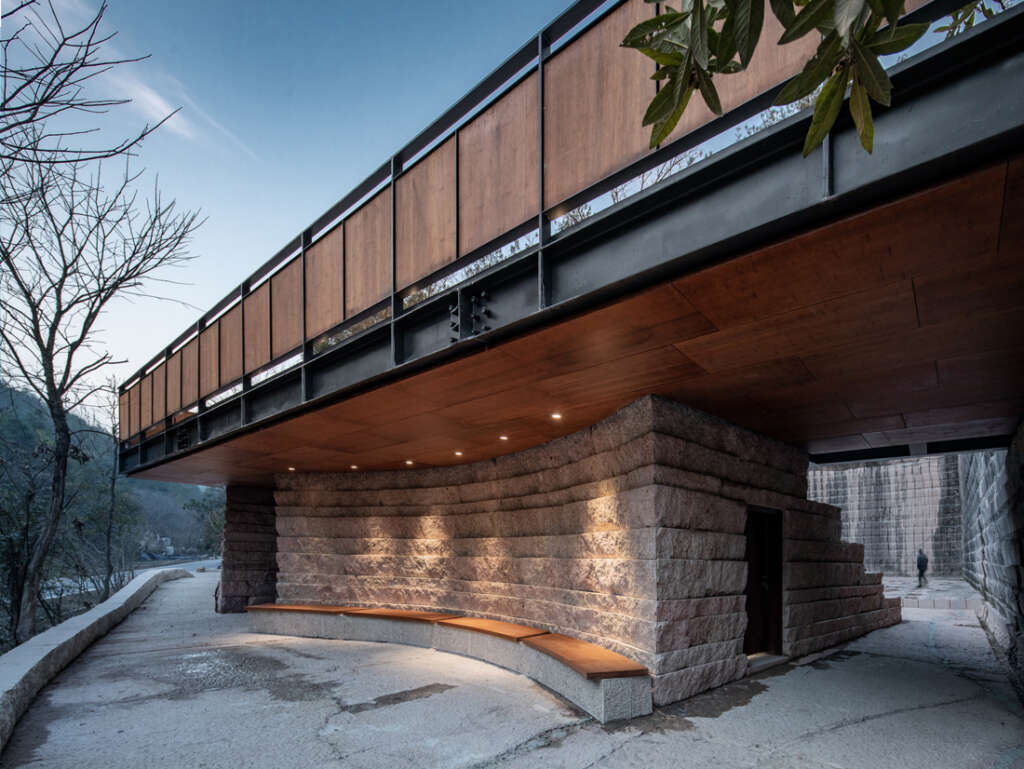
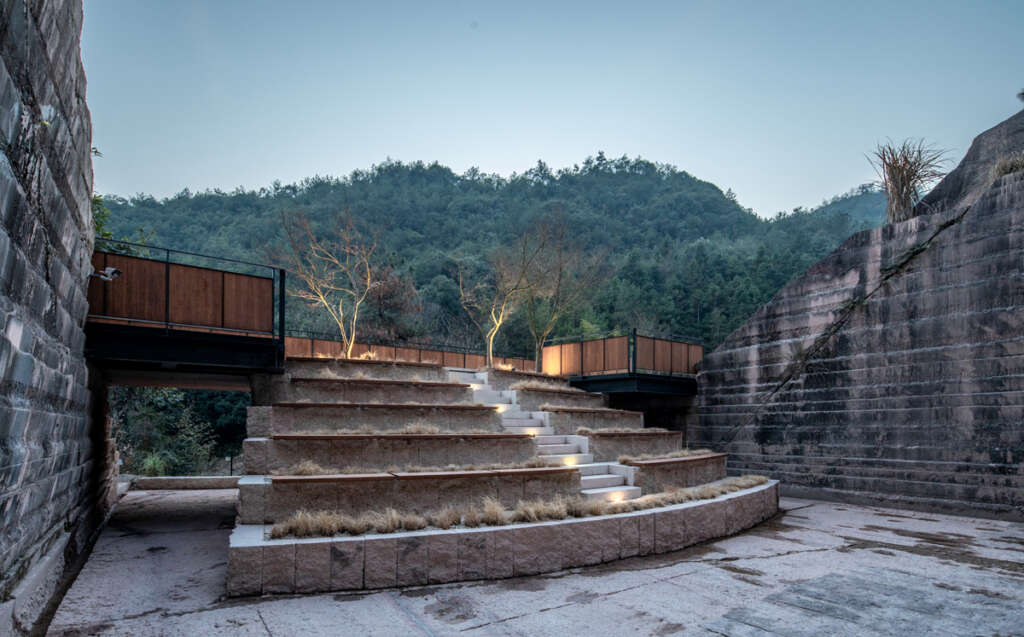
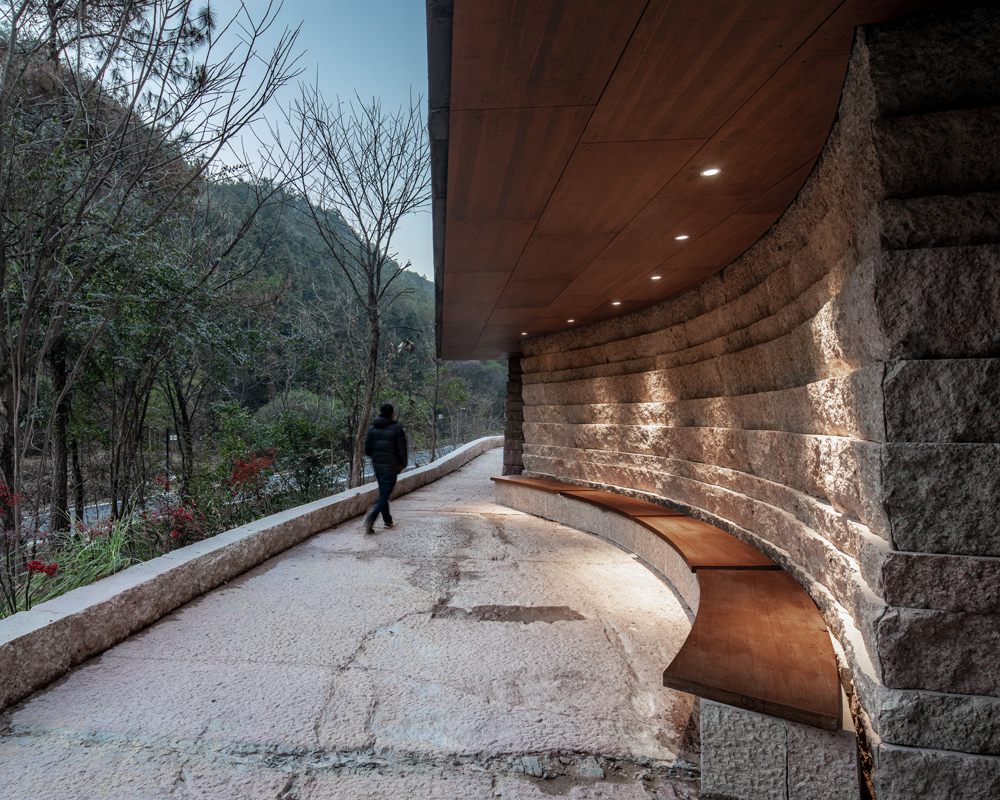
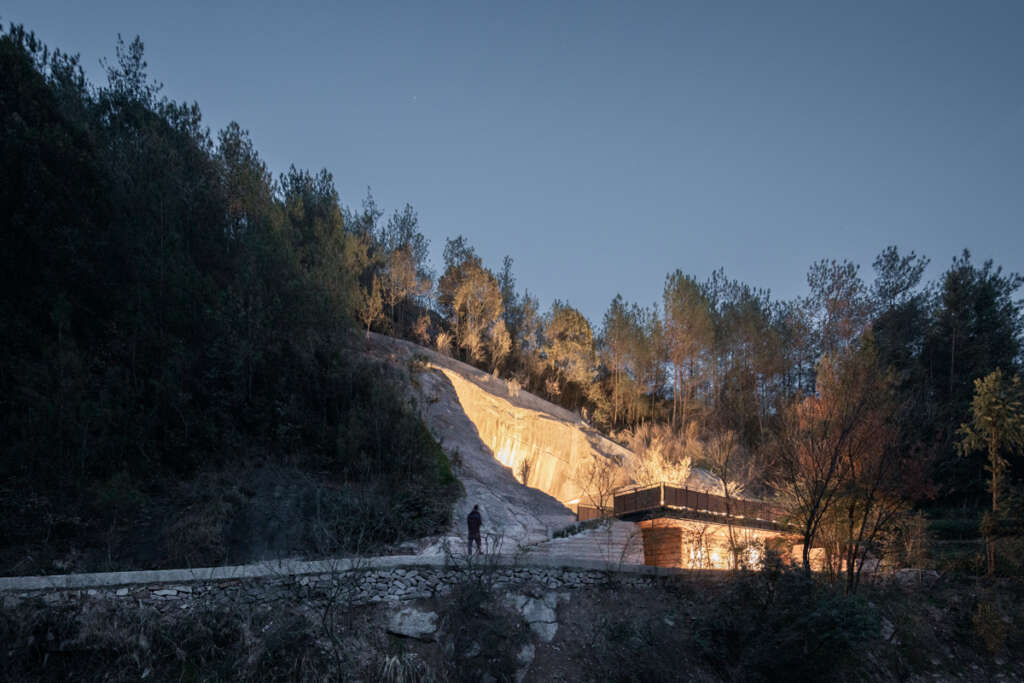
Potential of the Quarries
Tufa, an igneous volcanic rock that is found around the world and whose colour can vary from grey to yellowish, brownish, and reddish to bright red, has been quarried in the region for over 1000 years. The rock was used regionally as hewn masonry stone or tuff for construction as well as stone sculpture. Due to the ecological impact of the small family-owned quarries, stone quarrying came to an end and its heritage became a negative resource whose potential did not seem to be exploitable. The quarries had been left on their own for many years and sometimes decades, and reusing them also made it necessary to secure loose stones and boulders, since rock formations simply collapse again and again. After all, safety was a decisive criterion in the selection of the places where a new use would be possible.
Each of the spaces in the rock is different, having been shaped at random by the particular mining strategy. Some were quarried from the top down, and others from the middle of the mountain upwards or downwards, depending on the quality of the stones. This gave rise to complex sequences of spaces with breakthroughs towards the outside and above, which today represent great spatial potential.
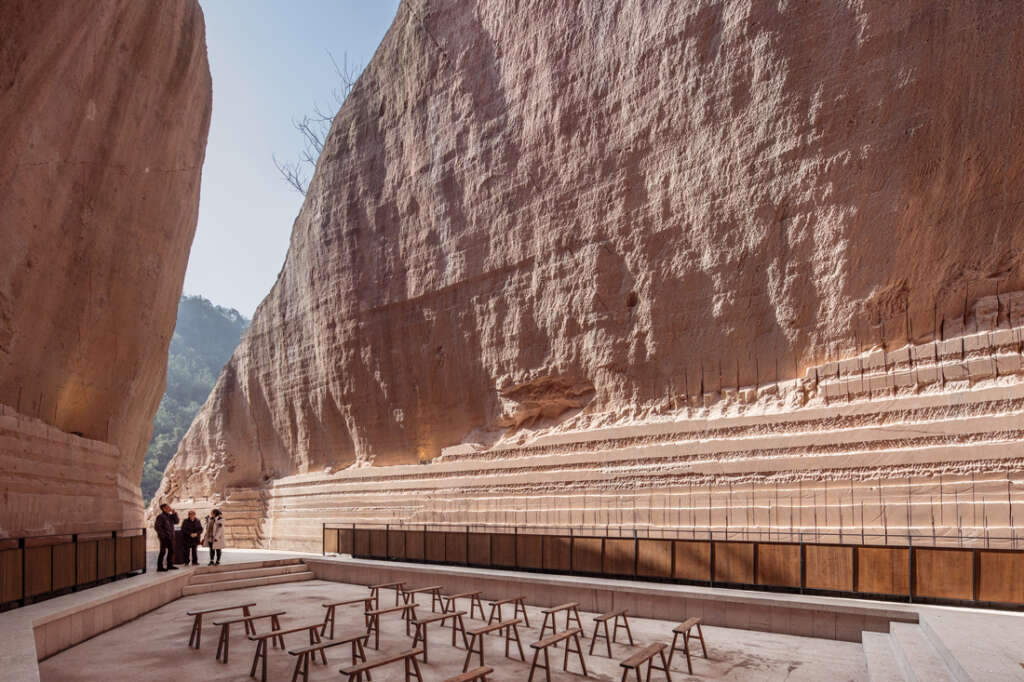
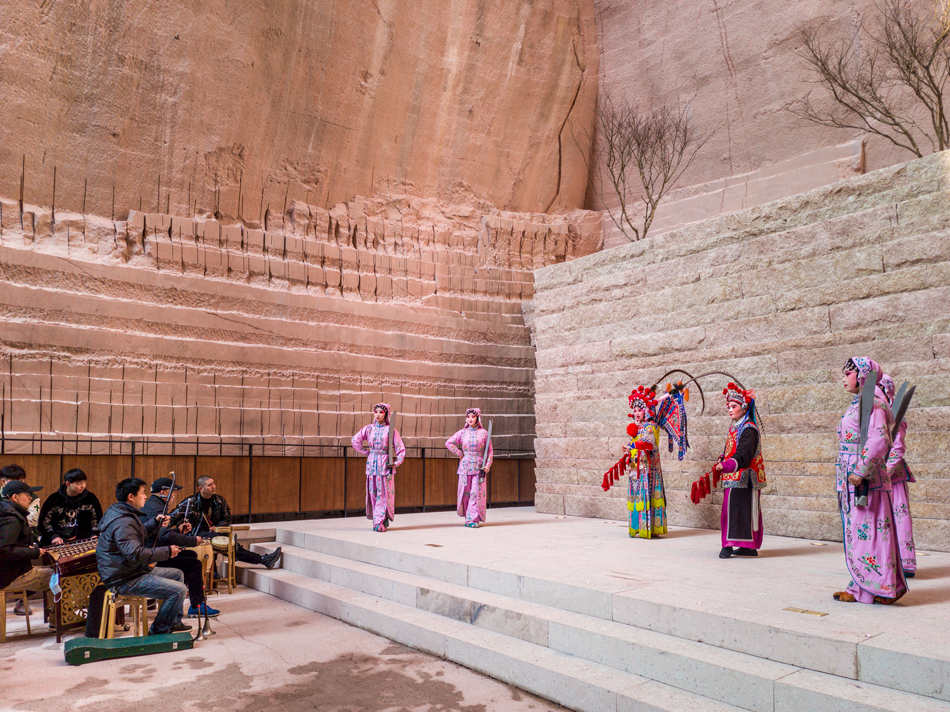
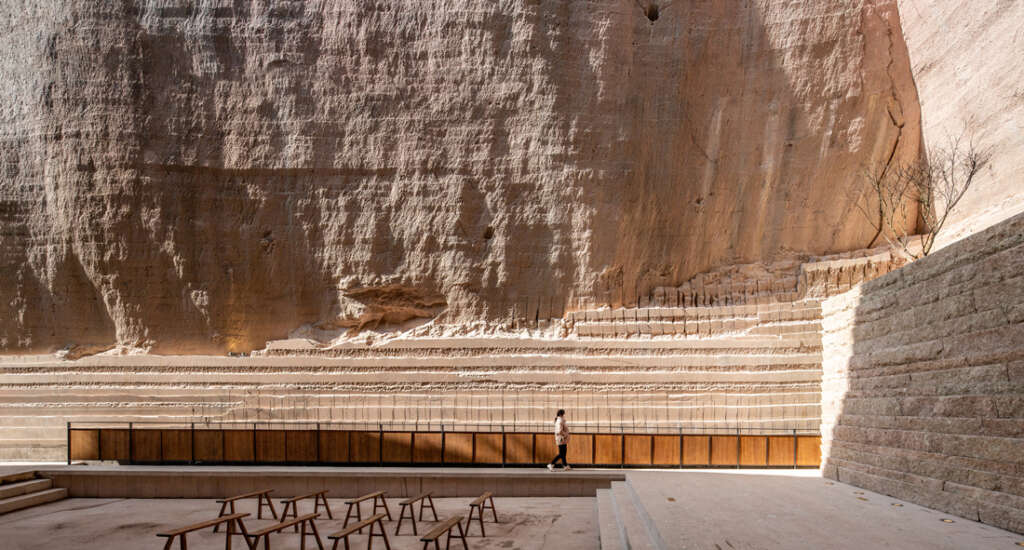
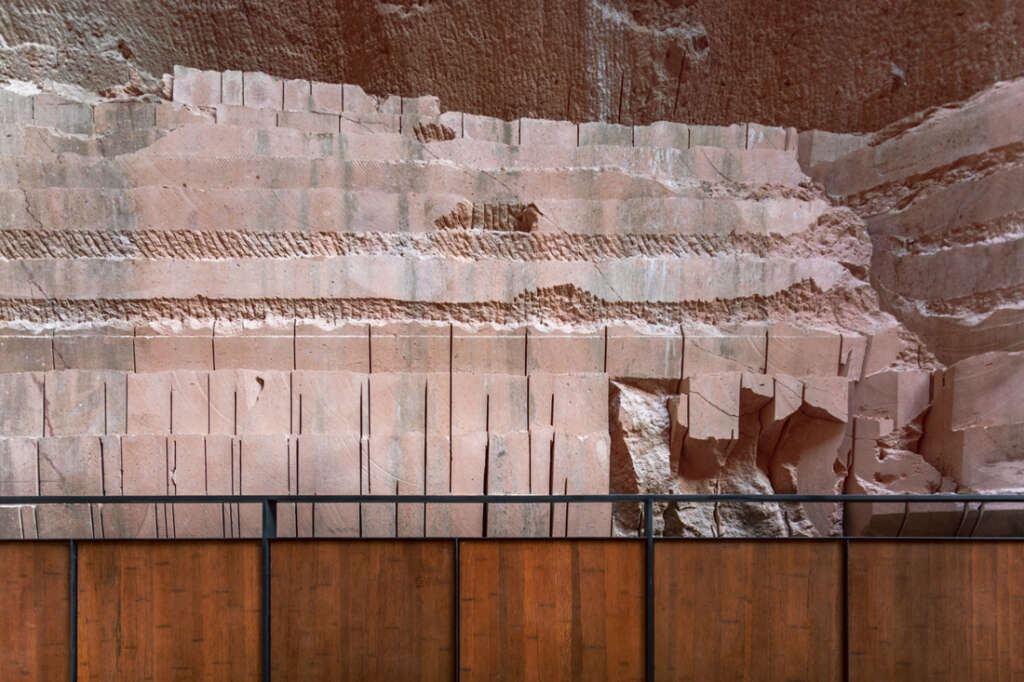
Local Resources
What Xu Tiantian and her team’s projects to transform the quarries all have in common is that they are all being realized with simple means, and that the interventions remain as minimal as possible in every case. On the one hand, this makes it possible to preserve the original character, and, on the other hand, the design stimulates sustainable, future-oriented development that brings improvements for the stressed ecosystem. The details of the installations are the same at all the sites, and concrete is used solely for necessary safety measures. The handrails are made of steel strips and, the infill of shelves and railings of pressed bamboo, which is more suitable for this climate than wood.
The conceptual position and the use of local resources determined the approach. The sensitive strategy, adapted to local needs, transforms the negative legacy of the exploitation of natural resources into a symbol of hope in the rural hinterland.
